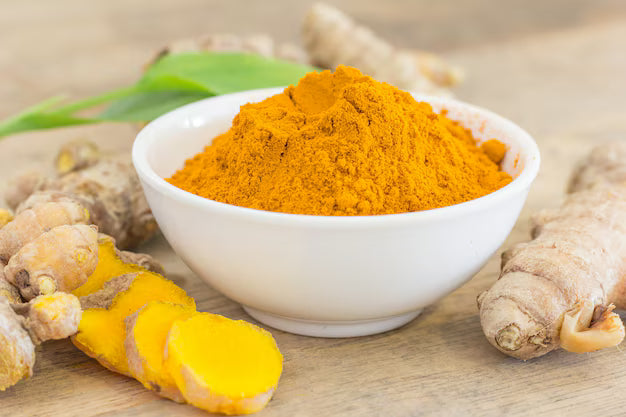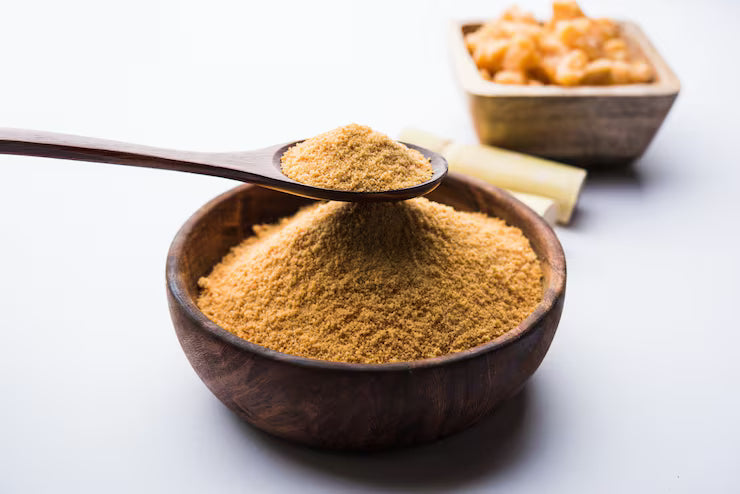7 signs your body is overloaded with toxins (Ama)

Introduction: When Your Body Speaks in Whispers
Have you ever felt tired even after a full night’s sleep or noticed your skin looking dull, no matter how well you eat? Perhaps your digestion feels sluggish or your mind foggy even when you’re “doing everything right.” These are not random annoyances; they’re your body’s whispers, gentle signs that something deeper is out of balance.
In Ayurveda, such an imbalance begins with Ama, a subtle toxic residue formed when your Agni (digestive fire) becomes weak or irregular. Ama isn’t just undigested food; it includes unprocessed emotions, stress, and environmental pollutants that clog the body’s natural pathways. Over time, this buildup disrupts energy flow, weakens immunity, and sets the stage for disease.
Ayurveda teaches that nearly all disorders start with Ama, making early recognition vital. When you learn to listen to these whispers before they turn into loud cries, you can restore balance naturally.
Here are seven subtle signs your body is asking for a detox, gentle hints that your Agni needs rekindling and your system needs cleansing:
-
Persistent Fatigue: You wake up tired or lose energy quickly because Ama blocks nourishment and oxygen flow.
-
Sluggish Digestion: Bloating, heaviness after meals, constipation, or irregular appetite indicate weak Agni and incomplete digestion.
-
Coated Tongue or Bad Breath: A white or yellow coating each morning reveals internal toxicity and poor digestion.
-
Brain Fog or Lack of Clarity: Circulating Ama clouds mental focus and dulls awareness.
-
Dull Skin and Eyes: When inner toxins accumulate, the skin and eyes lose their natural radiance.
-
Mood Swings or Irritability: Emotional stagnation arises when Ama blocks subtle mental channels (Manovaha Srotas).
-
Frequent Colds or Allergies: Weak Agni lowers immunity, allowing toxins to accumulate and trigger seasonal reactions.
When your body begins whispering through these subtle cues, it’s time to pause and cleanse not through harsh detoxes, but by rekindling Agni, clearing Ama, and restoring your natural vitality and glow.
What Is Ama in Ayurveda? (Understanding Internal Toxins)
What Is Ama?
In Ayurveda, Ama is the root cause of most imbalances. It’s the sticky, undigested metabolic residue that forms when digestion or metabolism is weak. The word “Ama” means uncooked or unprocessed, symbolizing substances the body cannot transform into nourishment or energy.
Instead of feeding the tissues, Ama clogs the internal pathways (Srotas), disturbs the Doshas, and obstructs the flow of Prana (life force). Heavy, cold, and slimy by nature, it aggravates Kapha and dulls Agni, creating a self-perpetuating cycle of sluggishness and toxin buildup.
How does ama accumulate?
Ama primarily forms due to weak agni, but several other factors can also trigger it:
Dietary causes: Overeating or eating before the previous meal is digested; partaking of cold, stale, oily, or foods incompatible with one’s system (wiruddha ahara); eating too little or skipping meals.
Lifestyle causes: Sedentary habits and lack of exercise; irregular sleep, erratic routines, or overeating at night; suppressing natural urges such as hunger or elimination.
Mental and emotional stress: Anxiety, anger, fear, or overthinking - all disturb agni.
Environmental causes: Cold, damp, or polluted environments; and seasonal transitions that strain metabolism.
Remember, even the healthiest food can create ama if digestion is weak; it’s not just what you eat, but how well your body can transform it to energy that matters. When food or experiences remain “half-cooked”, toxins circulate in the bloodstream, lodge in tissues, and manifest as fatigue, dullness, or digestive distress.
How to Clear Ama — The Ayurvedic Detox Approach
Ayurveda emphasizes gentle, natural detoxification that strengthens digestion instead of depleting it. The goal is not to starve but to support your body’s innate cleansing systems.
1. Strengthen Agni (Deepana & Pachana)
Kindle your digestive fire using spices like ginger, black pepper, cumin, hing, and trikatu. Sip warm water or herbal teas throughout the day, and avoid cold drinks that suppress Agni.
2. Follow a Light, Warm Diet (Ama Pachana Ahara)
Eat freshly cooked, easy-to-digest meals such as khichari, soups, and lightly spiced vegetables. Avoid leftovers, processed, or cold foods. Eat only when hungry, in a calm state, and finish before you’re full.
3. Promote Regular Elimination
Gentle exercise, yoga, and Triphala at bedtime help maintain bowel regularity. Abhyanga (warm oil massage) loosens Ama lodged in tissues and improves circulation.
4. Panchakarma (for Deep Cleansing)
Under Vaidya's guidance, therapies like Virechana (purgation), Basti (medicated enema), and Swedana (steam therapy) eliminate deep-seated toxins and rejuvenate Agni.
5. Mind Detox (Manas Shuddhi)
Ama affects both body and mind. Practice meditation, pranayama, journaling, and mindful silence to release emotional toxins. Balanced sleep and stress management are as essential to detox as food.
Ama and Modern Science — The Connection
From a modern perspective, Ama parallels metabolic waste, free radicals, and systemic inflammation substances that burden the body and impair cellular repair. Just as science identifies oxidative stress as the root of chronic disease, Ayurveda views Ama as the energetic equivalent, blocking natural healing and cellular intelligence.
Both sciences agree on one core principle: the body thrives when digestion, metabolism, and elimination work in harmony. Detoxification, in Ayurveda, is not about extreme fasting but about restoring that balance by strengthening Agni.
The 7 Hidden Signs Your Body Is Overloaded with Ama
1. Constant Fatigue and Brain Fog
Ama blocks the flow of Prana (vital energy), leading to lethargy and dullness. Modern science parallels this with metabolic waste buildup, causing cellular fatigue.
2. Coated Tongue and Bad Breath
A white or yellow tongue coating reveals undigested toxins. Daily tongue scraping (Jihwa Nirlekhana) and oil pulling prevent reabsorption.
3. Bloating, Gas, and Irregular Digestion
Heaviness after meals signals incomplete digestion. Ayurveda equates this with Ama fermentation; modern medicine links it to dysbiosis and sluggish gut transit.
4. Unexplained Aches or Joint Stiffness (Amavata)
When Ama combines with aggravated Vata, it settles in the joints, causing stiffness and swelling. Early detox prevents chronic inflammation.
5. Dull Skin, Acne, and Body Odor
Ama blocks micro-channels (Srotas), starving skin tissues (Twak). Internal cleansing restores true glow far beyond surface skincare.
6. Weak Immunity and Frequent Colds
Ama weakens Ojas (vital essence), reducing resistance. Cleansing revives immunity and energy naturally.
7. Mood Swings and Low Motivation
Ama clouds Manas (mind) and dulls Medhā Agni, the fire of clarity, leading to irritability or anxiety. Mindful detox restores balance and joy.
Are You in the Ama Stage? (Early Warning Phase)
Before disease manifests, Ayurveda recognizes the Ama stage as a silent buildup of toxins.
Quick self-check:
-
Coated tongue
-
Heaviness or sluggishness
-
Fatigue after meals
-
Foul breath
-
Irregular appetite
Ayurvedically, this is known as Sama Kapha Lakshana when Kapha mixes with Ama, making mucus thick and metabolism dull. Modern medicine would describe this as early metabolic toxicity. Addressing it through Ama Pachana (toxin digestion) and lifestyle correction can prevent deeper disorders.
Ayurvedic Detox — Gentle, Nourishing, and Restorative
Reignite Digestive Fire (Agni Deepana)
Start your day with warm water or ginger tea, and sip cumin-fennel-coriander (CFC) tea throughout the day to balance doshas and prevent Ama buildup.
Choose Ama-Reducing Foods
Favor light, warm, freshly cooked meals spiced with cumin, turmeric, and ginger. Avoid cold, oily, or heavy foods that weaken digestion.
Herbal Allies for Detox & Rejuvenation
-
Guduchi: purifies blood and enhances immunity
-
Pippali: improves digestion and nutrient absorption
-
Turmeric: detoxifies the liver and reduces inflammation
Panchakarma — The Complete Ayurvedic Detox
Classical therapies like Virechana (purgation) and Basti (enema) remove deep-seated toxins. Always done under Vaidya guidance, Panchakarma restores balance and vitality.
Daily Habits to Prevent Ama Buildup
-
Eat dinner early (by 7 PM) and keep it light
-
Practice tongue scraping and oil pulling daily
-
Stay hydrated with warm water and herbal teas
-
Get restful sleep and manage stress through meditation
When Ama Turns Into Disease — The Amavata Connection
If left unchecked, Ama combines with Vata and lodges in the joints, creating Amavata, a condition similar to rheumatoid arthritis. This toxic-Vata mix blocks nourishment, causing pain, stiffness, and inflammation.
Early detox, Snehana (oleation), Swedana (sweating), and warming herbs like Trikatu, Guggulu, and Eranda (castor oil) can prevent this transformation.
Ama acts like wet sludge, sticky and obstructive, while Vata is cold and mobile. When they meet, they create friction and degeneration. Timely cleansing and Vata-balancing care restore fluidity and strength.
Conclusion — Listen Before It’s Loud
Your body always whispers before it screams. Subtle cues like fatigue, coated tongue, bloating, or dull skin are not random they are early calls for cleansing and care. Ayurveda teaches:
“When Agni burns bright, Ama cannot form.”
True detox isn’t about deprivation, it’s about nurturing your body through balance, warmth, and awareness. Daily rituals like sipping warm water, mindful eating, self-massage, and herbs such as Triphala, Guduchi, and Turmeric help your system cleanse itself naturally.
If your body feels heavy or dull, it may be time to realign, not by punishment, but by nourishment.
Explore Ayurvedic Detox Teas, take the Dosha Quiz, or consult a Vaidya for a personalized detox plan that rekindles your natural vitality. Because real cleansing begins not with fasting, but with listening.
Shop the Detox & Cleanse Collection!
FAQs
1. What is Ama in simple terms?
Ama is the sticky, toxic residue left behind when food or emotions aren’t properly digested. It clogs the body’s pathways and causes fatigue and heaviness.
2. Can I remove Ama without Panchakarma?
Yes. Daily detox practices like eating light, freshly cooked meals, drinking cumin-fennel tea, taking Triphala, practicing oil massage, and getting sound sleep can gradually clear Ama.
3. What foods create Ama fastest?
Cold, processed, heavy, or incompatible foods, such as fried items, refined sugar, milk with fruits, or overeating when not hungry, weaken Agni and form Ama quickly.
4. What are the first symptoms of toxin overload?
A coated tongue, fatigue after meals, bloating, dull skin, and low motivation are early warning signs that your body is full of Ama.
5. Is detox the same as fasting?
No. Fasting restores digestion, but Ayurvedic detox nourishes while cleansing. It uses warm, light meals, herbs, hydration, and rest to rebuild Agni and remove toxins gently.
Popular Posts

Why Winter Makes Your Knees Ache: Vata-Balancing Tips & How to Use Pirant Oil
22 Dec, 2025Winter often brings an unwelcome rise in knee pain. Modern science and Ayurveda explain why joint...
Read more
Why Oral Care is a Daily Detox Ritual in Ayurveda
22 Dec, 2025Introduction — The Mouth as the Gateway to Health In Ayurveda, digestion is the foundation of ...
Read more
How to Improve Gut Health with Ayurveda
19 Dec, 2025Introduction Ayurveda has always emphasised that the root of health and disease lies in the gu...
Read more




 Popular Read
Popular Read
















































